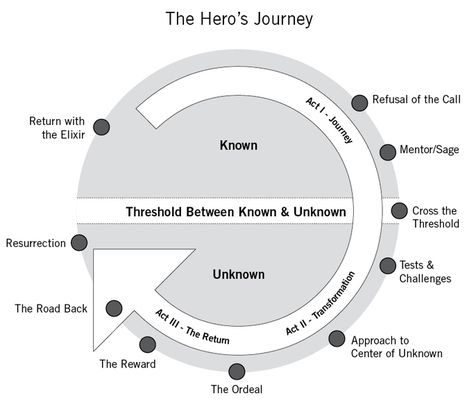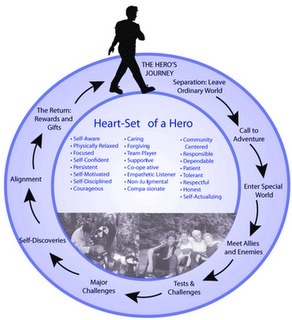The Burden of Isolation and Imprisonment
Each of the inmates inside Shawshank Prison is locked up metaphorically as well as literally, hiding from himself or unable to function in the unregulated world that extends beyond the prison walls. There are many levels of isolation inside Shawshank, from the large, enclosed recreation yard to the smaller work crews down to the cellblock, cells, and, finally, solitary confinement. The prison is thus a multilayered world, a microcosm of the world outside that the prisoners have been forcibly removed from. The bars, strict schedules, sadistic keepers, and predatory Sisters only add a sense of entrapment and suffocation to these layers of isolation….Red, meanwhile, identifies Andy as the part of himself who never let go of the idea of freedom. Freedom is a frightening concept for Red, who dreams of being paroled but eventually struggles to find his place in society after almost forty years in prison. Recounting Andy’s escape, therefore, allows Red to face his fears and find the psychological freedom he seeks.
The Power of Hope
Hope, more than anything else, drives the inmates at Shawshank and gives them the will to live. Andy’s sheer determination to maintain his own sense of self-worth and escape keeps him from dying of frustration and anger in solitary confinement. Hope is an abstract, passive emotion, akin to the passive, immobile, and inert lives of the prisoners. Andy sets about making hope a reality in the form of the agonizing progress he makes each year tunnelling his way through his concrete cell wall. Even Andy’s even-keeled and well-balanced temperament, however, eventually succumb to the bleakness of prison life. Red notes that Tommy Williams’s revelation that he could prove Andy’s innocence was like a key unlocking a cage in Andy’s mind, a cage that released a tiger called Hope. This hope reinvigorates Andy and spreads to many of the other inmates in the prison. In his letter addressed to Red, Andy writes that “hope is a good thing,” which in the end is all that Red has left. Red’s decision to go to Mexico to find Andy is the ultimate proof of Red’s own redemption, not from his life as a criminal but from his compromised state, bereft of hope and with no reason to embrace life or the future.
Corruption and Crime
Shawshank blurs the line between right and wrong and challenges the notion that isolating and reforming criminals will turn them into law-abiding citizens. Instead, the prison is a den of corruption, greed, bribery, and money laundering. Everyone exploits the system for their own gain, from Red, who can smuggle anything into the prison, all the way up to the wardens, who profit from forced prison labour. Andy’s willingness to launder Warden Norton’s slush money initially serves as a survival technique, a means of protecting himself by extending his good will to the administration. His complicity and knowledge of the warden’s illegal enterprises, however, keep Norton from ever releasing him for fear that Andy would reveal the warden’s secret. The fact that Shawshank is as corrupt and tainted as the outside world further justifies Andy’s escape from a hypocritical, exploitative system that cares little for the prisoners’ lives or rehabilitation.
Time
Time serves as both a source of torment as well as the backdrop for the slow, eventual achievement of Andy’s escape, his seemingly impossible goal for nearly twenty-eight years. Shawshank redefines the passage of time for the inmates, especially for the “lifers” like Andy and Red, who can only look forward to death. Hours can seem like a lifetime, and every day seems indistinguishable from the next, adding to the loneliness and burden of imprisonment. Ironically, however, time also proves to be the means of Andy’s escape and salvation and gives him hope throughout his quarter-century in Shawshank….
Symbols
Rita Hayworth
The pinup posters of Rita Hayworth and the other women represent the outside world, hope, and every inmate’s desire to escape to a normal life. Andy admits as much when he tells Red that sometimes he imagines stepping right through the photograph and into another life. More literally, Rita Hayworth really does remind Andy of his desire to actually break out of Shawshank because of the chiselled hole in the concrete that the posters conceal. As a result, Rita Hayworth embodies the sense of hope that keeps Andy alive and sane and distinguishes him from the other inmates…
Rocks
The rocks Andy sculpts serve as a cover to justify owning a rock hammer, but they also represent the spirit of hope that he exudes. As an amateur geologist, Andy is undoubtedly distracted from the doldrums of daily prison life by the rocks. Continuing to pursue his hobby gives him a sense of normality and control over his life that many other inmates lack. Displaying his collection of polished rocks on the windowsill of his cell also gives Andy a sense of accomplishment and means to measure the passage of time. More important, however, sculpting the pebbles give Andy hope and a means to fend off despair. Giving these sculptures away to Red and other inmates also represents Andy’s ability to transfer his sense of hope—his “inner light” as Red calls it—to some of the other inmates.
Final quote – use of repetition
I hope Andy is down there.
I hope I can make it across the border.
I hope to see my friend and shake his hand.
I hope the Pacific is as blue as it has been in my dreams.
I hope.
Red’s words at the end of his narrative reinforce the central role hope plays in “The Shawshank Redemption.”
SparkNotes Editors. “SparkNote on Rita Hayworth and the Shawshank Redemption.” SparkNotes.com. SparkNotes LLC. 2007. Web. 12 Dec. 2014.



